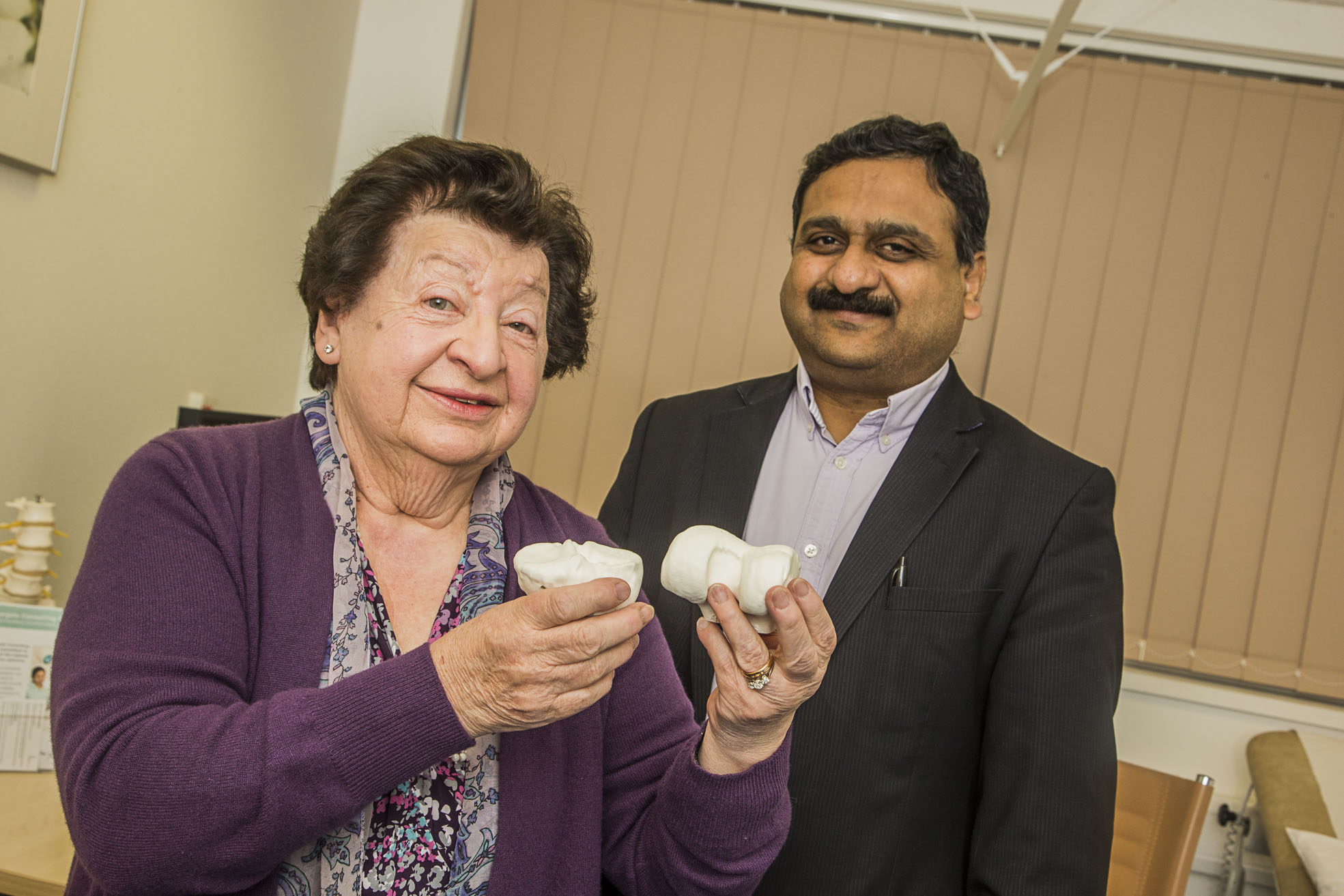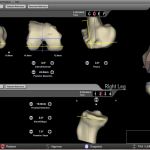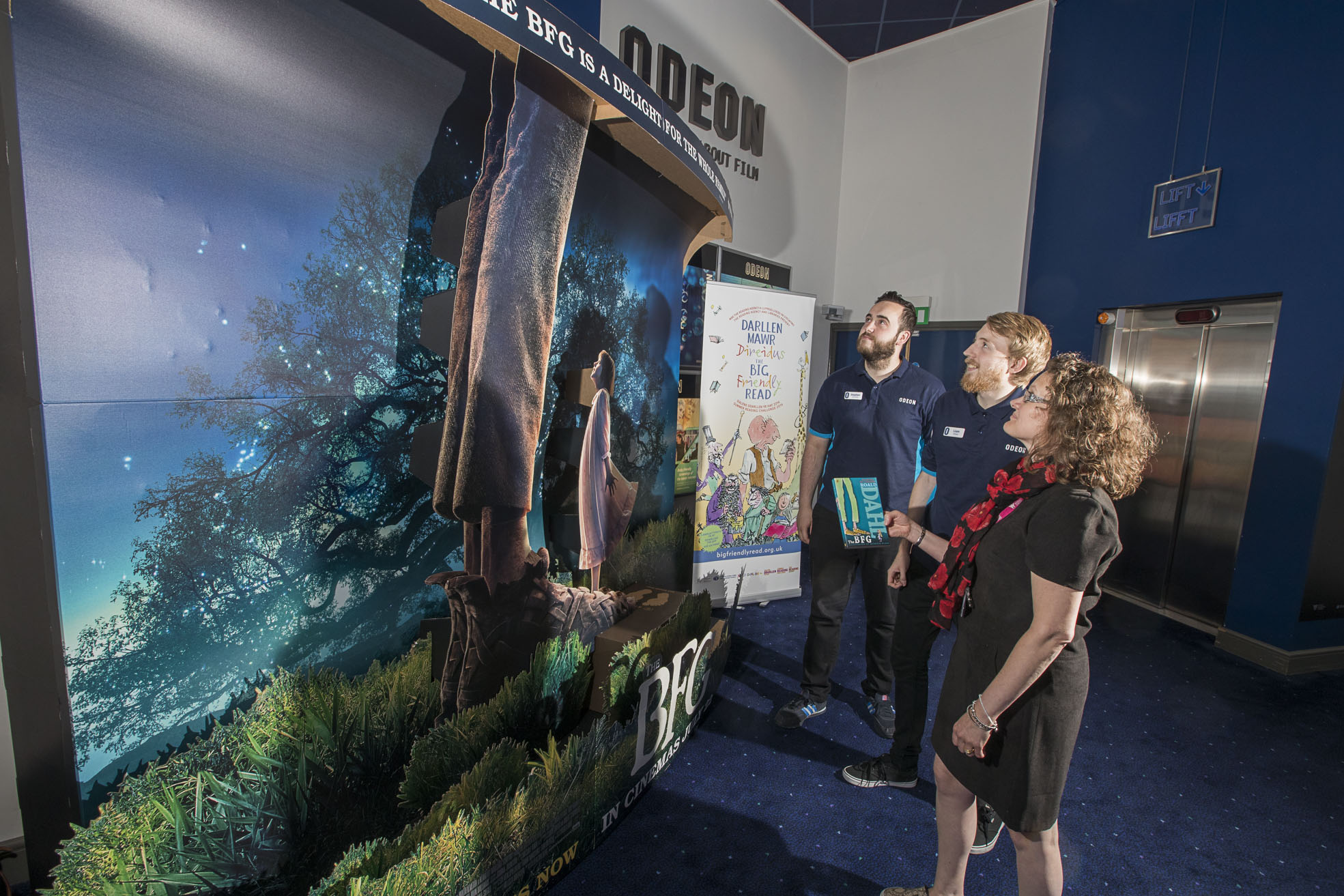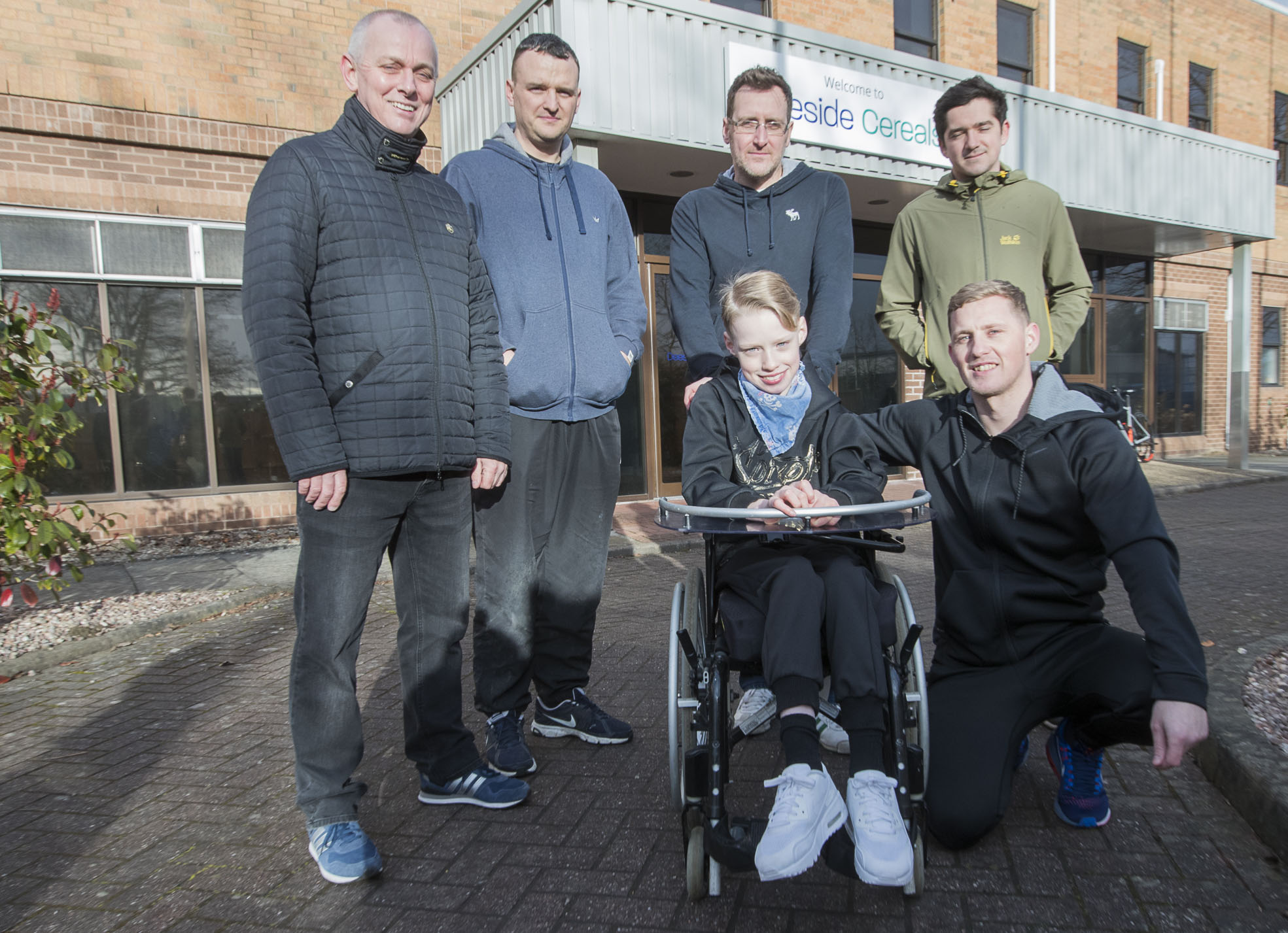An 85-year-old from Conwy is enjoying a new lease of life after a top surgeon replaced both her knee joints using models created on a 3D printer.
The cutting-edge technology at the Spire Yale Hospital in Wrexham has allowed Irena Griffiths to walk unaided for the first time in five years and improved her quality of life dramatically.
She has described her operation and its results as a miracle and says she will be eternally grateful to consultant hip and knee surgeon Muthu Ganapathi who carried out the procedure.
Irena said: “Mr Ganapathi and his team were brilliant. I am really indebted to them. I have absolutely no pain and I feel like a new woman – and that’s me at 85!”
Arriving from Italy 70 years ago, Irena is part of the famous Parisella ice cream family and has worked her whole life in the family business whether in the kiosk on Conwy Quay or at the restaurant and café, The Cadora.
She said: “I still do a bit when I can and now I’ve recovered and got my new knees there’s no stopping me. At my age I don’t want to stop and just sit down.”
The active octogenarian suffered with both knees for many years but losing her husband of 53 years, Arthur, made her decide to get the problems dealt with once and for all.
“I had never been in hospital my whole life so I was very nervous but when you’re on your own you can’t take risks. What if I had a fall and broke my hip? But I did dilly-dally and it was five years before I decided I had to do something about it.” she said.
She read an article about the new technology that uses a scan of the existing joint to recreate a new one out of synthetic material on a 3D printer, and liked the sound of Muthu Ganapathi and his ground-breaking surgery.
After consultation with Mr Ganapathi, Irena had a knee joint replaced at the Spire Yale Hospital in Wrexham, using the pioneering method and recovering after just six weeks.
She said: “I should have had it done before, but in some ways I’m glad I waited as the technology wouldn’t have been there. Once I realised how amazing it was I waited six months and went back to have the other knee done.
“The second one was truly amazing. I recovered enough to drive and everything after four weeks and didn’t even need to take pain killers.”
Mr Ganapathi has been a consultant at the Spire Yale Hospital since 2010, having completed his higher specialist orthopaedic training in Wales before doing further advanced training in Canada. His NHS work is at Ysbyty Gwynedd. He is now leading the field in the use of computer created 3D printed joint replacements and has carried out 400 such procedures since 2012 which is one of the largest numbers in UK.
Mr Ganapathi, aged 48, said: “It is like science fiction really. Instead of using traditional manual instruments which involves a degree of ‘eye balling’ during surgery, I can plan the whole surgery on a 3D computer model of the patient’s knee. “When I first heard about it, I was quite sceptical myself but the results have been amazing.”
“I first started doing it because of the efficiency of the procedure – it has cut the surgical time down enormously which is very important as we have such long waiting lists in Wales.”
“I was one of the first doctors to use the technique in the UK and I was able to show that we could carry out five or six knee replacements in a theatre list when that had previously been three or four per list.”
“However, you can do the surgeries fast but that doesn’t mean anything if the outcome isn’t good.”
Now in possession of all the data looking at the functional outcomes for his patients, Mr Ganapathi has found the benefits of this ground-breaking surgery are again breaking all records.
He said: “Multiple studies have shown that up to 20 per cent of knee replacement patients are unhappy with their knee replacements. With this new technique, most patients seem to be happy with the outcome. The functional outcome scores are much better than what has been reported in multiple studies from UK National Joint Registry. Many patients are also recovering much faster after surgery and attaining activity levels at 6 weeks which they usually achieve after many months.
“In addition, a significant number of patients are scoring almost similar scores to people who have never had knee problems.”
Mr Ganapathi believes the success of the 3D printing procedure is down to the level of accuracy the technology can provide. He said: “A complex knee can be like a smashed up car and what we are providing is like a Formula One service. We can cut the model to within half a millimetre precision and you can see exactly what you want to do beforehand and make the best possible fit. With this technique, the knee replacement procedure becomes likes a Formula One pit stop – fast, efficient and reproducible.”
Mr Ganapathi, who lives in Colwyn Bay with his wife and two children, has been to Norway, Sweden, Italy, Egypt, India, Brazil and America to demonstrate the technique and visitors from UK, Norway and Sweden have been to see his work in action.
Catching up with Irena six weeks after her operation he was delighted with her progress. He said: “When I saw her at six week after the second surgery, she was walking almost normally and considering she is 85, she seemed to have made a remarkable recovery.”
Reflecting on her time at the Spire Yale Hospital, Irena added: “It was lovely. The food was great, the team and all the nurses are brilliant and I haven’t looked back since.
“They’ve given me a new lease of life.”
Further details on this new technique could be found at www.ganapathihipkneesurgeon.com and for more information about Spire Yale Hospital go to www.spirehealthcare.com/yale











